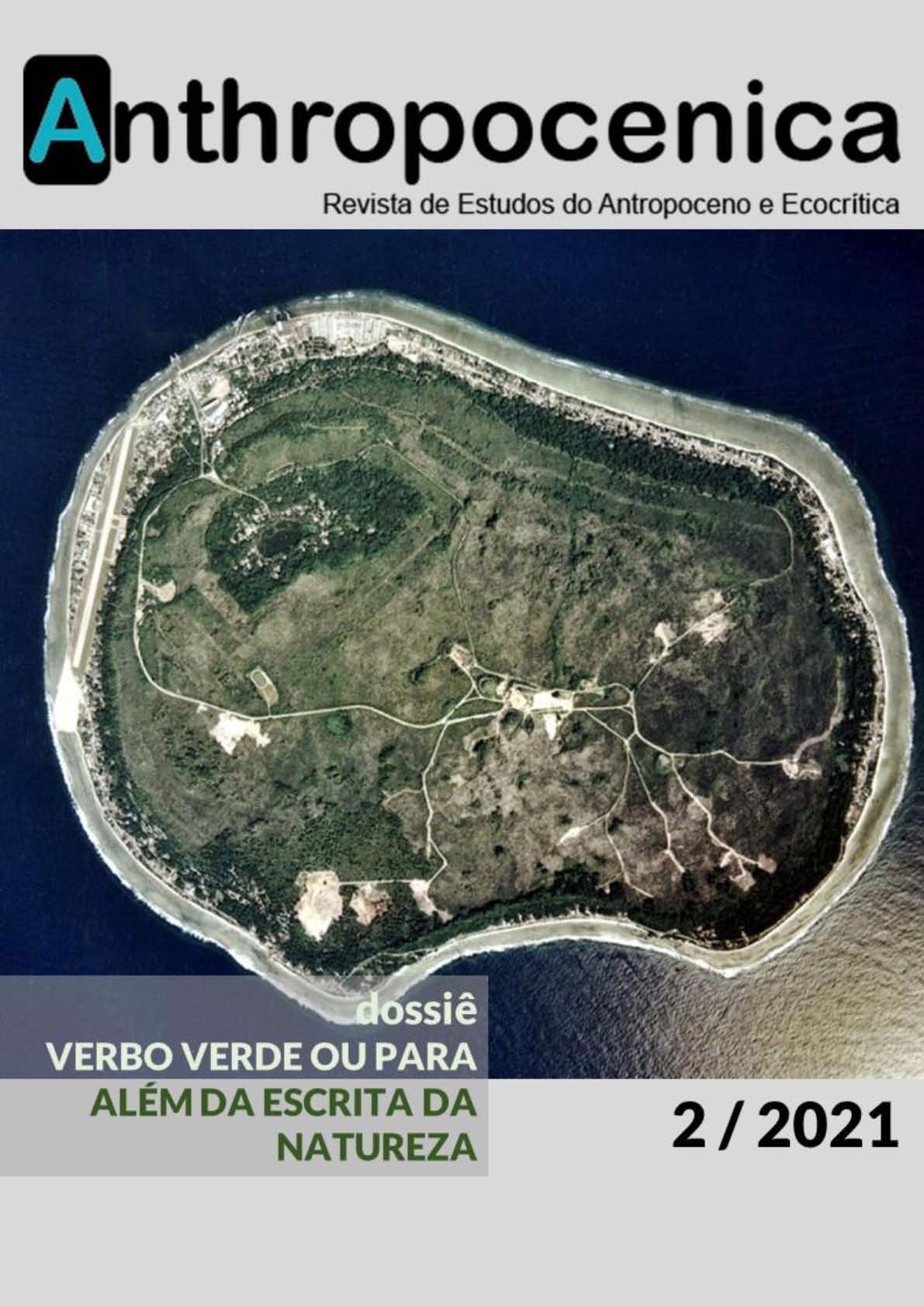Identidad e hiperstición
DOI:
https://doi.org/10.21814/anthropocenica.3359Palavras-chave:
Antropocentrismo, Identidade, Pós-humanismo, Prospectiva, HiperstiçãoResumo
O seguinte artigo pretende gerar uma reflexão crítica - na perspetiva das ciências humanas e sociais - sobre as diferentes transformações e configurações míticas contemporâneas emergentes, face à singularidade tecnológica, em torno da concepção antropocêntrica de identidade. Para tanto, propõe-se a exploração de conceitos-chave como o Pós-humanismo e a Hiperstição e sua relação com a ficção científica prospectiva literária e cinematográfica, esta última entendida como o género concetual cujo contexto, motivações ou enquadramento procuram prever ou explorar o que o futuro nos trará. Esta abordagem implica um esforço de miscigenação disciplinar e teórica, uma mistura de abordagens de diferentes campos, adaptadas e reformuladas para alcançar uma compreensão e interpretação melhor e mais aprofundada - de um ponto de vista oblíquo - de fenómenos emergentes que são uma parte fundamental da forma como que a humanidade construiu e continuará a construir uma visão para si mesma.
Downloads
Referências
AA.VV. & Biblical and Archaeological School of Jerusalem. (2019). Biblia de Jerusalén (5ª ed., revisada y aumentada). Collegeville: Liturgical Press.
Asimov, I. (1976 [1998]). El hombre bicentenario. Trad.: Carlos Gardini. Santiago de Chile: B.S.A.
Asimov, I. (1956 [1988]). La última pregunta. Sueños de robot (pp. 277-291). Barcelona: Plaza y Janés.
Asimov, I. (1950 [1977]a). Sentido giratorio. Yo robot (pp. 36-56). Buenos Aires: Sudamericana.
Asimov, I. (1950 [1977]b). Razón. Yo robot (pp. 57-77). Buenos Aires: Sudamericana.
Barrett, J. L. (2007). Cognitive Science of Religion: What Is It and Why Is It? Religion Compass, 1(6), pp. 768-786. Retirado de: https://doi.org/10.1111/j.1749-8171.2007.00042.x DOI: https://doi.org/10.1111/j.1749-8171.2007.00042.x
Blish, J. (1972 [1987]). Semillas estelares. Trad.: Domingos Santos. Madrid: Edisan.
Clarke, A. C. (1968 [1996]). 2001. Una odisea espacial. Barcelona: Plaza & Janés.
Clarke, A. C. (1993 [1995]). El martillo de Dios. Trad.: Hernán Sabaté. Buenos Aires: Emecé.
Deleuze, G. & Guattari, F. (1980 [2002]). Mil mesetas. Capitalismo y esquizofrenia II. Trad.: José Vázquez Pérez. Valencia: Pre-textos.
Dick, P. K. (1968 [1981]).¿Sueñan los androides con ovejas eléctricas? Trad.: Miguel Antón. Barcelona: Edhasa.
Durkheim, E. (1912 [2001]). Las Formas Elementales de La Vida Religiosa. Trad.: Jesús Rivas. México: Colofón.
García Amen, F. (2020). Lo humano y lo no humano. Una perspectiva aceleracionista sobre la generación del proyecto en la era posdigital ARQUISUR Revista, 10(17), pp. 46-59. Retirado de: https://doi.org/10.14409/ar.v10i17.8971 DOI: https://doi.org/10.14409/ar.v10i17.8971
Guigou, L. N. (2018). Kabbalah, comunicación, antropología: las maneras de hacer/pensar teorías en la modernidad. Montevideo: NAC, FIC, UDELAR.
Guigou, L. N. (2009). Ciberespacio, memoria y tradición. Las artes de construir el tiempo en la alta modernidad. Civitas - Revista de Ciências Sociais, 9(2), pp. 177-184. ISSN: 1519-6089. Retirado de: https://www.redalyc.org/articulo.oa?id=742/74212716002 DOI: https://doi.org/10.15448/1984-7289.2009.2.5281
Haraway, D. (1991). A Cyborg Manifesto: Science, Technology, and Socialist–Feminism in the Late 20th Century. In D. Haraway, Simians, Cyborgs, and Women: the Reinvention of Nature (pp. 149-181). New York: Routledge.
Heinlein, R. A. (1961) [2018]). Stranger in a Strange Land: new York: Ace Books.
Herbert, F. (1965) [2005]). Duna. Trad.: Domingo Santos. Barcelona: Debolsillo.
Kohl, P. L. et al. (2020). Adaptive evolution of honeybee dance dialects. Proceedings of the Royal Society B: Biological Sciences, 287(1922), 20200190. Retirado de: https://doi.org/10.1098/rspb.2020.0190 DOI: https://doi.org/10.1098/rspb.2020.0190
Lanman, J. A. (2019). On the nature and future of agency detection and religión. Religion, Brain & Behavior, 9(3) pp. 258-260, DOI: 10.1080/2153599X.2018.145353 DOI: https://doi.org/10.1080/2153599X.2018.1453535
Lorenz, K. (1963 [1980]). Sobre la agresión: El pretendido mal. Trad.: Félix Blanco. México: Siglo XXI.
Mazzu & Jota-Pérez, F. (2016). Entrevista realizada a Francisco Jota-Pérez. La manzana dorada. Retirado de: http://lamanzanadoradaeris.blogspot.com/2016/10/hipersticion-una-entrevista-con_4.html
Meyrink, G. (1915 [2016]). El Gólem. Trad.: Alaric Dukass. Barcelona: Plutón.
Mori, M (1970). Bukimi no tani: the uncanny valley. Energy, 7, pp. 33–35.
Pohl, F. (1976 [1985]). Homo Plus. Trad.: Manuela Diez. Barcelona: Bruguera.
Reeves, B., & Nass, C. (2003). The Media Equation: How People Treat Computers, Television, and New Media Like Real People and Places (Reprint ed.). New York: Cambridge University Press.
Sapolsky, R. M. (2018). Behave: The Biology of Humans at Our Best and Worst (Illustrated ed.). New York Penguin Books.
Simkins, J. (2016). The Science Fiction Mythmakers: Religion, Science and Philosophy in Wells, Clarke, Dick and Herbert: Jefferson: McFarland & Company.
Scott, R. (dir.) (1982). Blade Runner. The Final Cut. [Película]. The Ladd Company.
Smith, C. (1963) [1984]). El juego de la rata y del dragón.Trad.: Marcial Souto. Buenos Aires: Minotauro.
Stapledon, O. (1937) [1985]). Hacedor de estrellas. Trad.: Gregorio lemos. Barcelona: Minotauro.
Sturgeon, T. (1953) [1998]). Más que humano. Trad.: Jorge Sánchez. Barcelona: Minotauro.
Verhoeven, P. (dir.) (1987). Robocop. [Película]. Orion Pictures.
Villeneuve, D. (dir.) (2017). Blade Runner 2049 [Película]. Columbia Pictures.
Williamson, J. (1949) [1976]). Los humanoides. Trad.: Rafael Trechera. Buenos Aires: Fantaciencia.




